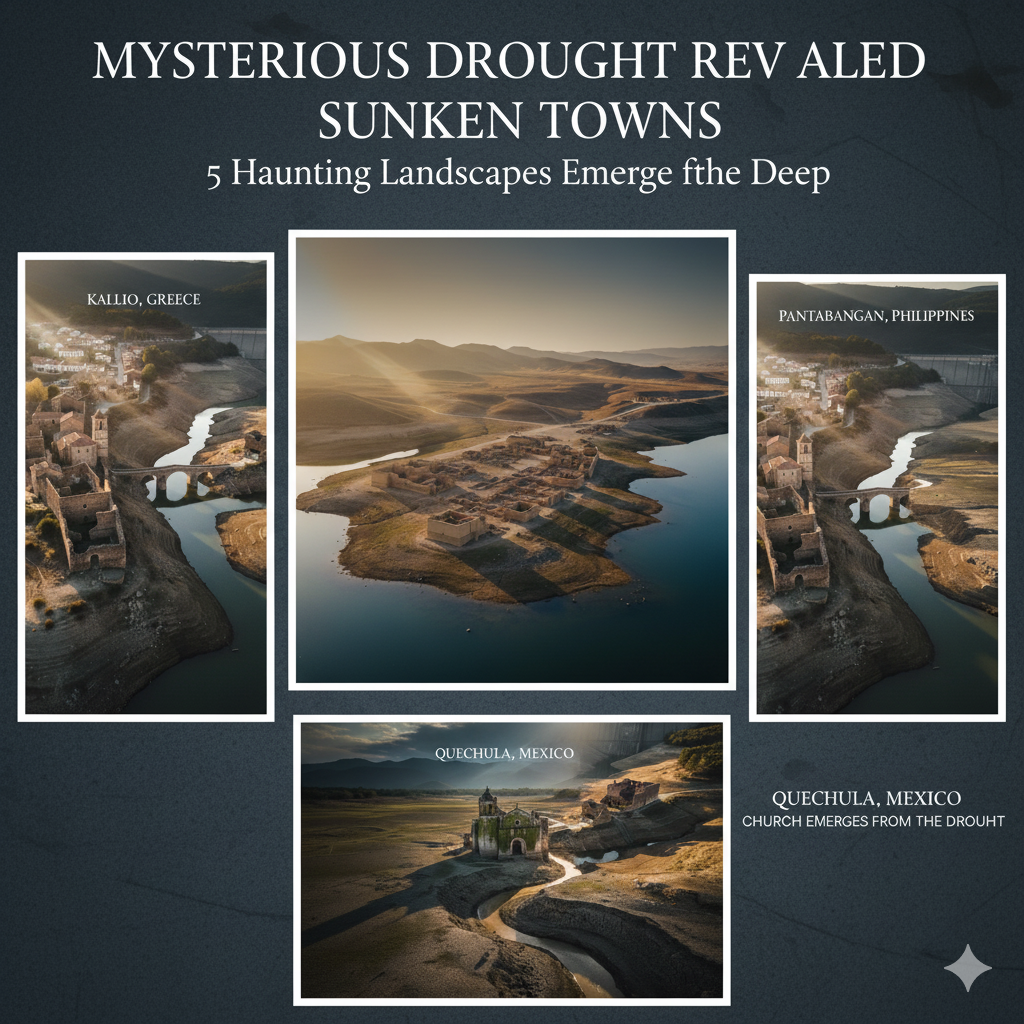Every few years, when droughts intensify and water levels drop, lakes around the world dramatically expose what was once hidden beneath deep waters. Old towns, churches, schools, and streets lie beneath dams and reservoirs—frozen in time, waiting for their brief moment to reemerge. These are drought revealed sunken towns, places where history surfaces and visitors can actually walk into the past.
In this article, we’ll explore seven of the most fascinating cases where lakes receded to reveal submerged settlements, the stories behind them, how you can visit them, the risks involved, and why these phenomena matter for heritage, tourism, and climate awareness.
What is a Drought Revealed Sunken Towns?
A drought revealed sunken town refers to a city, village or settlement that was submerged under water (often intentionally, for dam construction or other infrastructure projects) and then reappears—partially or fully—when a lake, reservoir, or river’s water level falls significantly due to drought or prolonged dry season.
Causes & Mechanics
- Dam construction or creation of reservoirs floods existing settlements.
- Over time, water levels are maintained, and towns stay submerged.
- During droughts or extreme heat (often linked to climate change), water is withdrawn or does not get replenished. The lake drops, exposing floors, buildings, roads—a ghost town revealed.
- Sediment covers ruin or ruins lie hidden underwater; receding water unveils them.
Why It’s Rare and What Triggers It
- Requires both a history of submerged settlement and severe drought.
- Happens only briefly—weeks to months, depending on climate, usage, rainfall.
- Triggered by extremes: heatwaves, reduced rainfall, water demand (for agriculture, energy etc.)
7 Remarkable Drought Revealed Sunken Towns
Here are seven examples of drought revealed sunken towns from across the world. Each has its own unique story.
1. Kallio, Greece – The Village of the Mornos Dam
- Location: Lake Mornos reservoir, Greece
- History: Kallio was submerged in the late 1970s when the Mornos dam was constructed to supply water to Athens.
- What’s Revealed: Homes, a school, church foundations. Under recent drought conditions, water levels dropped ~30-40% and ruins reemerged.
- Visiting Tips: If traveling to Greece, check water level reports for Mornos. Local access may be restricted. Respect any dam authority warnings.
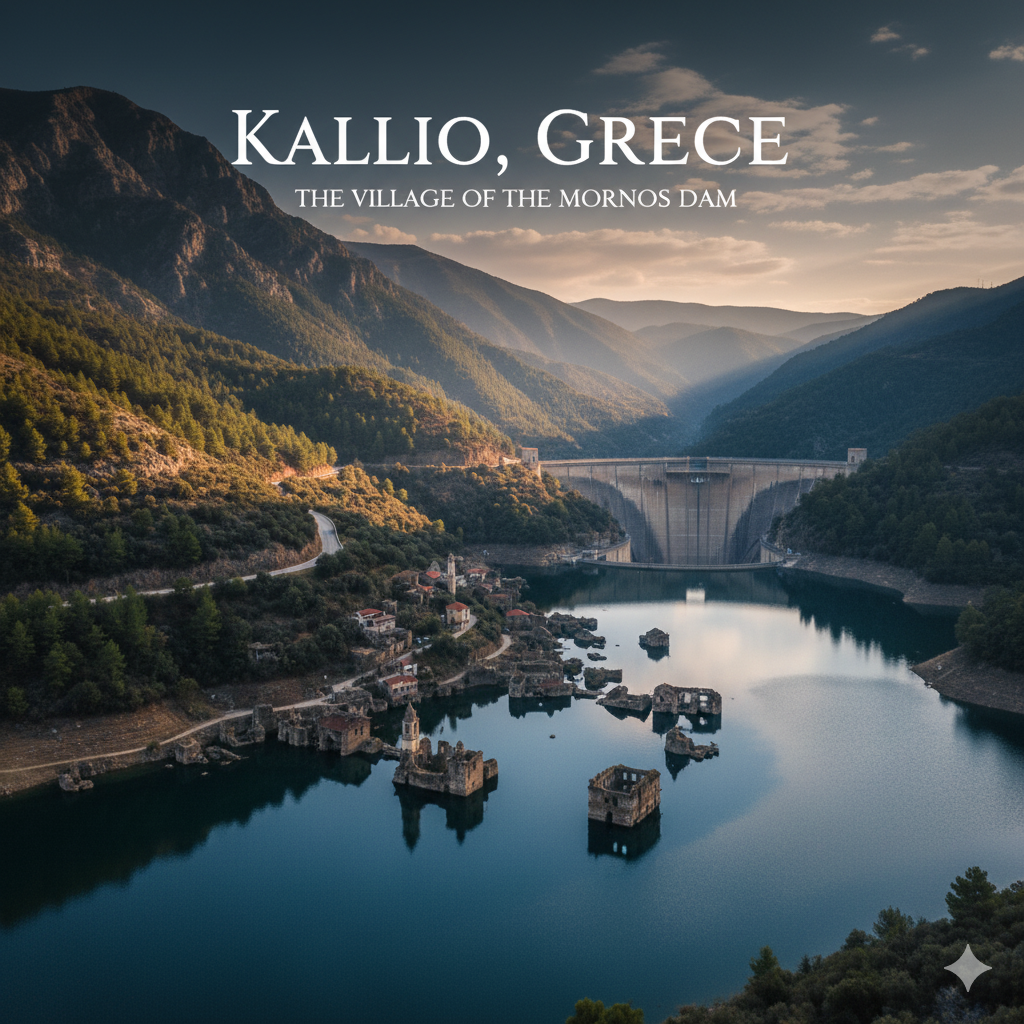
2. Pantabangan, Philippines – The Reappearing Towns
- Location: Nueva Ecija, Philippines
- History: Submerged since the 1970s by a dam built for irrigation and hydropower.
- What’s Revealed: Ruins of the old town—church, tombstones, foundations—surface when the reservoir drops significantly.
- Visiting Tips: Drought seasons (El Niño) yield best visibility. For safety, go with a local guide as terrain may be slippery or dangerous.
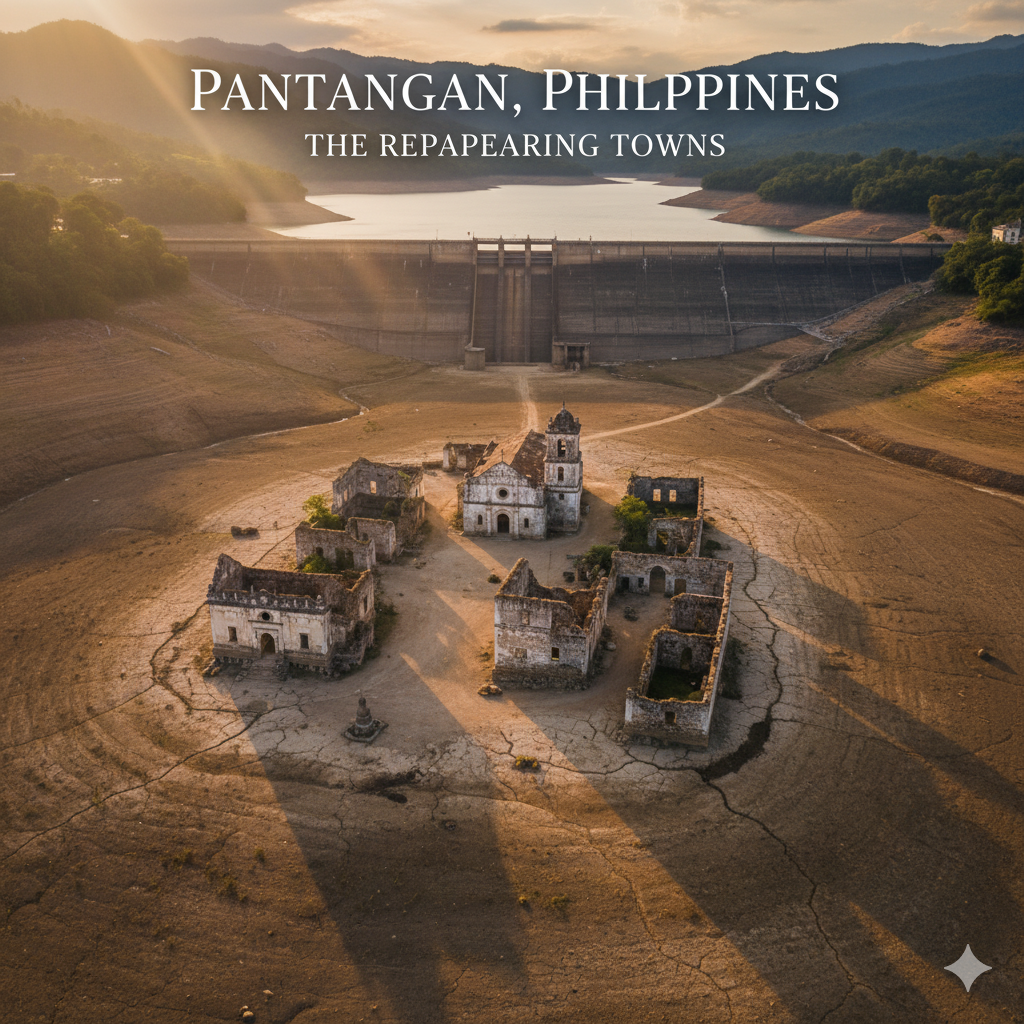
3. Zakhiku / Kemune, Iraq – Ancient City of the Mittani Empire
- Location: Mosul reservoir, Kurdistan region, Iraq
- History: Zakhiku (sometimes identified as Kelane/Kemune) was flooded by dam waters. Dates back to ~1550-1350 BC.
- What’s Revealed: Palace structures, buildings with mud-brick walls, archaeological remains.
- Visiting Tips: Visibility often brief. Visits often for researchers. Access may be limited due to political / safety issues.
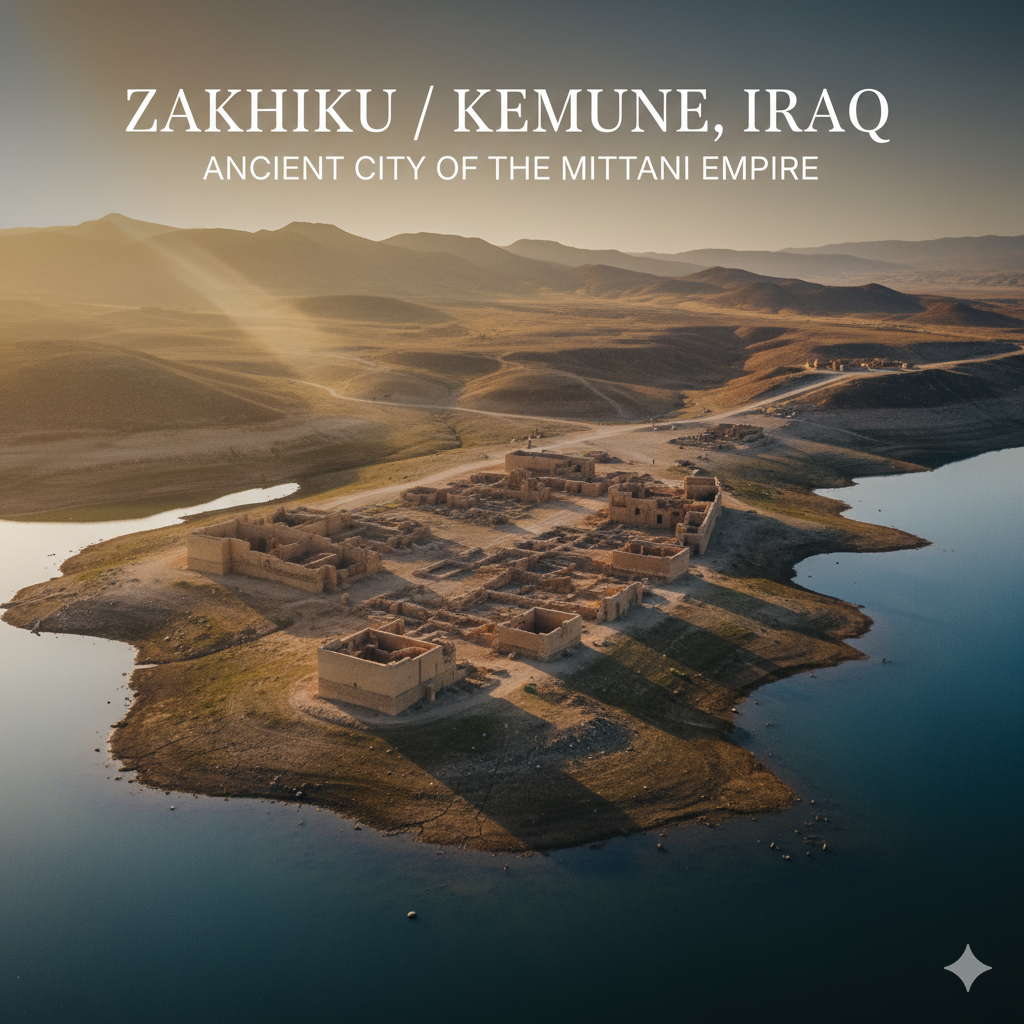
4. Mansilla de la Sierra, Spain – The Return Under Water
- Location: La Rioja, Spain’s reservoir where Mansilla de la Sierra is located National Geographic
- History: Small town (~600 people) moved in the 1950s-60s due to dam construction. Submerged by reservoir.
- What’s Revealed: Playgrounds, bridges, houses when reservoir drops to ~15% capacity.
- Visiting Tips: Seasonal. Past droughts have allowed walking in the area. However, infrastructure may be unsafe.
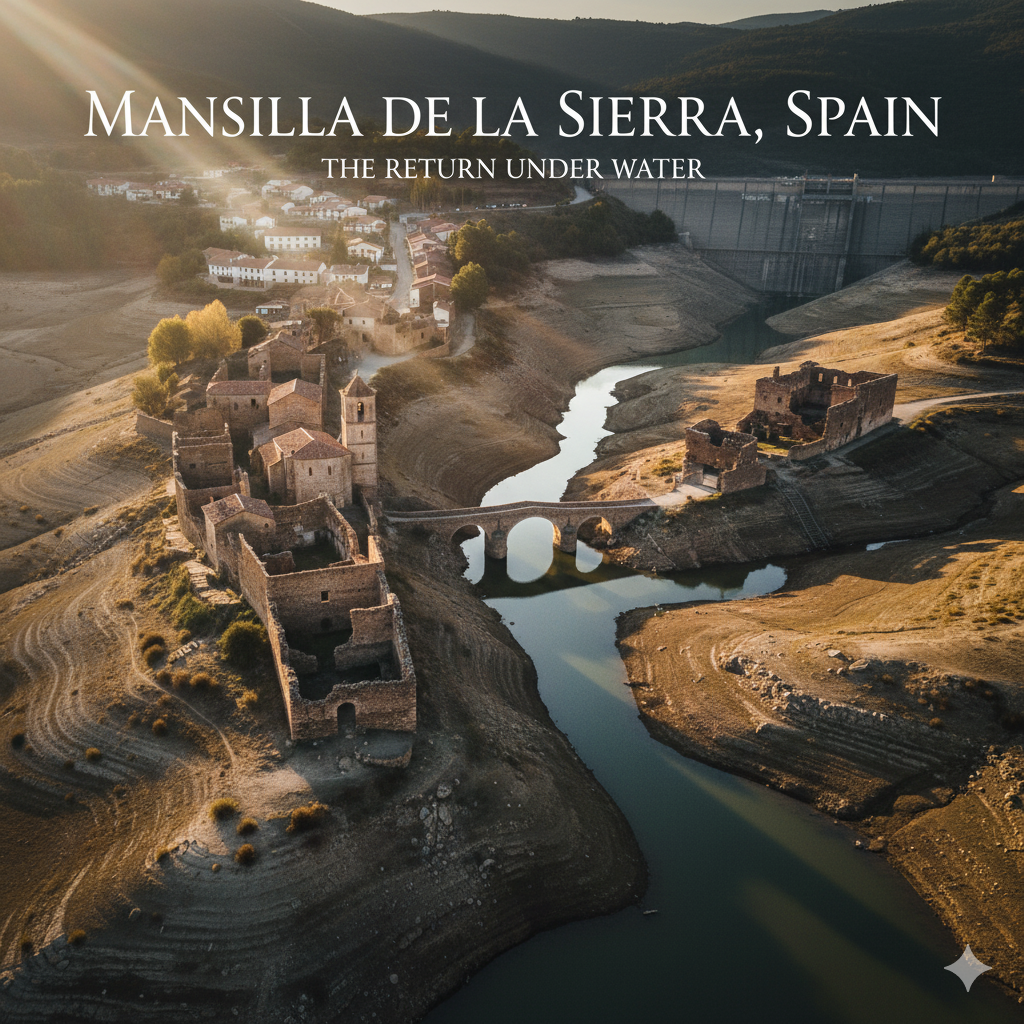
5. Quechula, Mexico – Church Emerges from the Drought
- Location: Nezahualcóyotl Reservoir, Chiapas, Mexico
- History: The town and church submerged in 1966 when the dam was built.
- What’s Revealed: The ruins of a grand church, stone structures. Visible during recent drought plummeting water levels in 2002, 2015, 2023.
- Visiting Tips: Monitor reservoir water levels. Local community sometimes allows visitors.
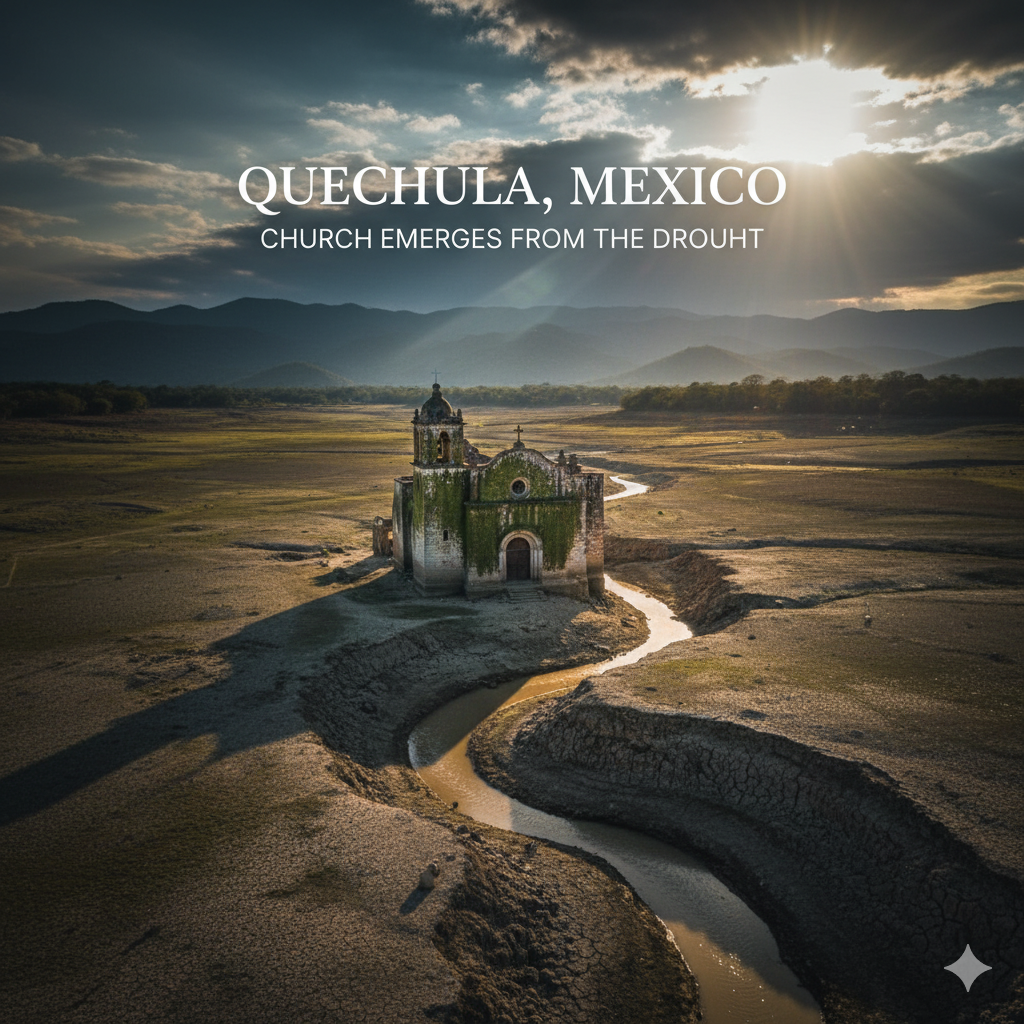
6. Other Known Cases & Emerging Examples
- Various smaller submerged villages worldwide reemerge sometimes during drought: many in reservoir-fed dams in Asia, Latin America.
- Example: Smaller sunken settlements in Europe seen during low water in rivers/reservoirs. (Morns dam’s surroundings, etc.)
Geological, Historical & Social Significance
Heritage & Archaeology
These towns are time capsules. When water recedes, archaeologists, historians, and locals get rare access to ruins and artifacts that are otherwise permanently underwater. Examples like Kemune/Zakhiku yield insights into Bronze Age civilization.
Cultural Memory & Displacement
Many people displaced when dams were built still remember their old homes—seeing them reappear can be emotional, nostalgic, even painful. Mansilla de la Sierra is one such example.
Climate Change & Drought
These phenomena are becoming more common with changing climate: increased drought, higher temperatures, excessive water drawdown for agriculture. It’s both a symptom and warning of environmental stress.
Best Time & Conditions to Witness a Drought Revealed Sunken Towns
| Region/Country | Best Season | Conditions Needed |
|---|---|---|
| Greece (Kallio) | Summer months during heatwaves | Reservoir levels drop ~30-40% or more |
| Philippines (Pantabangan) | During El Niño or extended dry season | Drop of many meters in reservoir depth |
| Iraq (Kemune) | During severe drought & low rainfall years | Reservoir draws down enough to expose submerged ruins |
| Spain (Mansilla de la Sierra) | Late summer, dry season | Reservoir <20% fill National Geograp |
| Mexico (Quechula) | During exceptionally dry years | Church emerges when water ≪ full capacity |
Visiting Tips & Precautions
- Check local water levels & official sources: Before making travel plans, verify lake/reservoir status. Local authorities or news outlets often report when sites emerge.
- Respect safety signs: Submerged foundations can be unstable; slipping, sharp debris, broken structures, mud.
- Guided visits: When possible, hire local guides—they know safe paths and access rules.
- Cultural sensitivity: Remember these places often have emotional significance. Be respectful of local stories, past displacements.
- Preservation: Do not remove artifacts or damage ruins. Exposure to air can cause rapid degradation.
Explore More: Secret Beaches of Mantigue Island Hidden tropical escapes you can still visit.
FAQs – Drought Revealed Sunken Towns
Q1: What is meant by a “drought revealed sunken towns”?
A drought revealed sunken town is a settlement that was submerged underwater (often by dam or reservoir creation) and becomes visible again when water levels drop significantly due to drought or extended dry conditions.
Q2: How long do such towns remain visible?
Visibility is temporary—usually a few weeks to a few months depending on rainfall, reservoir management, dam usage, and demand for water.
Q3: Are these ruins safe to walk into?
It depends. Structures may be unstable, submerged parts degraded, algae or mud slippery. Always check safety, ideally with local guide, and wear proper footwear.
Q4: Can tourists visit these places legally?
Often yes, but access can be restricted by dam authorities or local governments. It’s important to follow signage, local laws, and seek permission where required.
Q5: Do these events harm the archaeological sites?
Exposure can damage ruins if not managed. Rapid changes in moisture, exposure to sun or oxygen, foot traffic can accelerate decay. Conservation is vital.
Traveler Advise – Drought Revealed Sunken Towns
The phenomenon of a drought revealed sunken towns is a striking reminder of how landscapes—built by humans—remain connected to forces like water, climate, and time. When lakes recede, we glimpse through water’s curtain into lost communities, memory, and history.
From Kallio in Greece to Pantabangan in the Philippines, from Kemune in Iraq to Mansilla de la Sierra in Spain and Quechula in Mexico, these places illustrate lives submerged, stories paused, only to resurface when nature demands they be seen. For travelers, historians, and environmentalists alike, these moments are both haunting and beautiful—warnings of climate change and celebrations of heritage.
If you plan a visit, do so with curiosity, respect, and awareness. Because when you walk through these sunken towns, you’re not just stepping into ruins—you’re walking into echoes of past lives waiting to be remembered.

